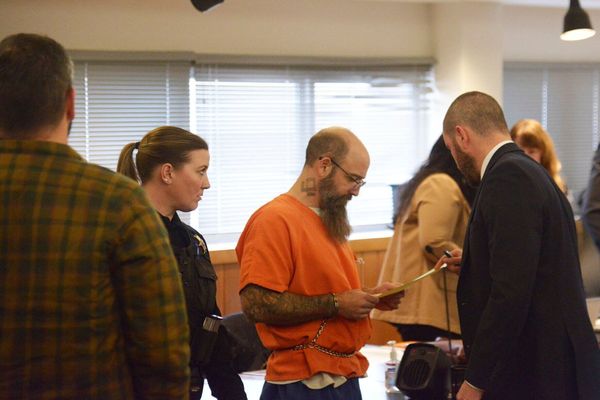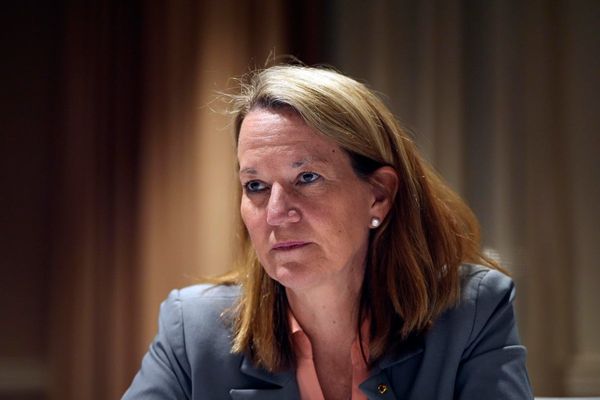
Pundits and politicians lately have raised questions and doubts about the value, effectiveness, and even the very purpose of higher education. It’s too expensive, they argue, or it’s too elitist, or it isn’t focused strongly enough on pure job skills.
But in an economy incessantly disrupted by change, higher education remains the best way for the rising generation to develop the knowledge, critical thinking, and adaptability that our country needs to boost living standards, sustain optimism, and secure our leading place in the world.
The graduating class of 2023 couldn’t agree more. In a national Harris Poll survey of this spring’s graduates, nine out of 10 said they’re glad they went to college. That same super-majority also agreed that a degree is the best way for someone to secure their future.
Postsecondary education comes in many forms–one size doesn’t fit all. Whether it’s a two-year, four-year, or postgraduate program, degrees and the evolving models of lifelong learning are key to developing the workforce that employers who provide well-paying and fulfilling jobs increasingly demand.
Why the anti-college movement is problematic
Colleges and universities–a network of almost 4,000 schools and more than 1 million professional educators–are already at work. Without a doubt, they remain the best-positioned providers of this toolbox of skills.
Though some elected officials seem to be at war with their public colleges and universities, other state and local governments are investing in higher education, seeing it as a powertrain for the workforce and economic development.
In Illinois, for instance, state investment has helped us expand the University of Illinois System to include its pioneering Discovery Partners Institute and Illinois Innovation Network. Going well beyond the conventional remit of higher education, their mission is aimed, in part, at workforce development. This includes high-tech training for people who may never attend college.
Smart leaders–Democrats and Republicans alike–see the job-creating potential in such collaborations among higher education, government, and private industry. Many of these students might never set foot on a traditional college campus, but university-led training will give them the skills to compete throughout their careers, to the benefit of their community and the country.
At the mention of such efforts, higher education skeptics would probably jump up to argue that what more students really need is only a shorter course on narrow job skills rather than spending two years at a community college or four or more years at a university.
While that short-term approach will be a wiser option for some students in certain fields, if applied too broadly, this thinking would stifle innovation and wealth generation. That’s because colleges and universities remain, far and away, the primary source of people who either become managers and leaders within established organizations or start their own companies and become job creators themselves.
Today’s graduates get it. They fully appreciate their college experience, and the positive outlook they have about their own college-powered futures should cause skeptics to reconsider their strictures.
The Harris Poll survey of graduating seniors, conducted in May, found that 95% of graduates of two-year, four-year, and graduate programs are excited about their postgraduate plans, and nine of 10 said that college was worthwhile, they were happy with their choice of school and think they chose the right field of study.
Of the half of graduates who plan to immediately get a paid job–as opposed to, say, pursuing another degree or taking some time off–79% had already secured postgraduate employment in their primary field of study. And one in two said the job hunt was easy. Remember, we’re still in the middle of commencement season.
The ROI of higher education
We know from longstanding research that new graduates almost certainly will benefit financially from their degrees. According to the U.S. Bureau of Labor Statistics, those with bachelor’s degrees earned nearly $30,000 more annually than counterparts who have only a high school education. A two-year degree yields an extra $8,000 a year.
However, the poll shows a concern that higher ed leaders are all too aware of: 43% of graduates told us that they will enter the workforce with $50,000 or more in debt–and 17% with a debt of $100,000 or more.
There is a small silver lining. The findings highlight public higher education’s role: 20% of those polled who are graduating from a public school report carrying no debt at all, compared with 7% of their private-school peers.
Still, affordability is a concern students and families regularly raise. A third of this spring’s grads say financial assistance was a reason why they attended the school they did; only the degree program was a bigger factor in why students made their choice.
Over the past decade, many universities around the country have implemented tuition freezes or greatly limited increases. That includes the three University of Illinois campuses in Urbana-Champaign, Chicago, and Springfield, where total enrollment has grown every year over the last decade.
Affordability and accessibility go hand in hand, and accessibility is the key to making certain that the benefits of higher education in all its various forms reach as many Americans as possible.
Colleges and universities must work more to control their costs, but public institutions must also–through their results–continually make the case to state and federal lawmakers that public investment in higher education’s mission ensures that our country has a well-educated, highly capable workforce and a civic-minded citizenry.
Public funding of higher education has mostly declined for decades, though thankfully in some states–including Illinois–that tide has begun to reverse over the past few years.
Skeptics see higher education as a problem that needs to be solved. They couldn’t be more wrong. Though it needs to continue improving, higher education is an engine ready to drive us forward, providing the economic and societal infrastructure we require in fast-changing times.
The country’s newest graduates wholeheartedly agree.
Tim Killeen is president of the University of Illinois System. Will Johnson is CEO of The Harris Poll.
The opinions expressed in Fortune.com commentary pieces are solely the views of their authors and do not necessarily reflect the opinions and beliefs of Fortune.
More must-read commentary published by Fortune:
- The ‘Elon Paradox’: He sells Teslas–but you’d expect him to drive a Ram. Here’s what your car says about your politics
- The alt-right economy is failing. Here’s the real performance of anti-woke entrepreneurs
- The debt ceiling deal has reduced access to supplemental food plans. Here’s why that’s a false economy
- E-bike injuries: ‘We’re only seeing the tip of the iceberg,’ trauma experts warn







